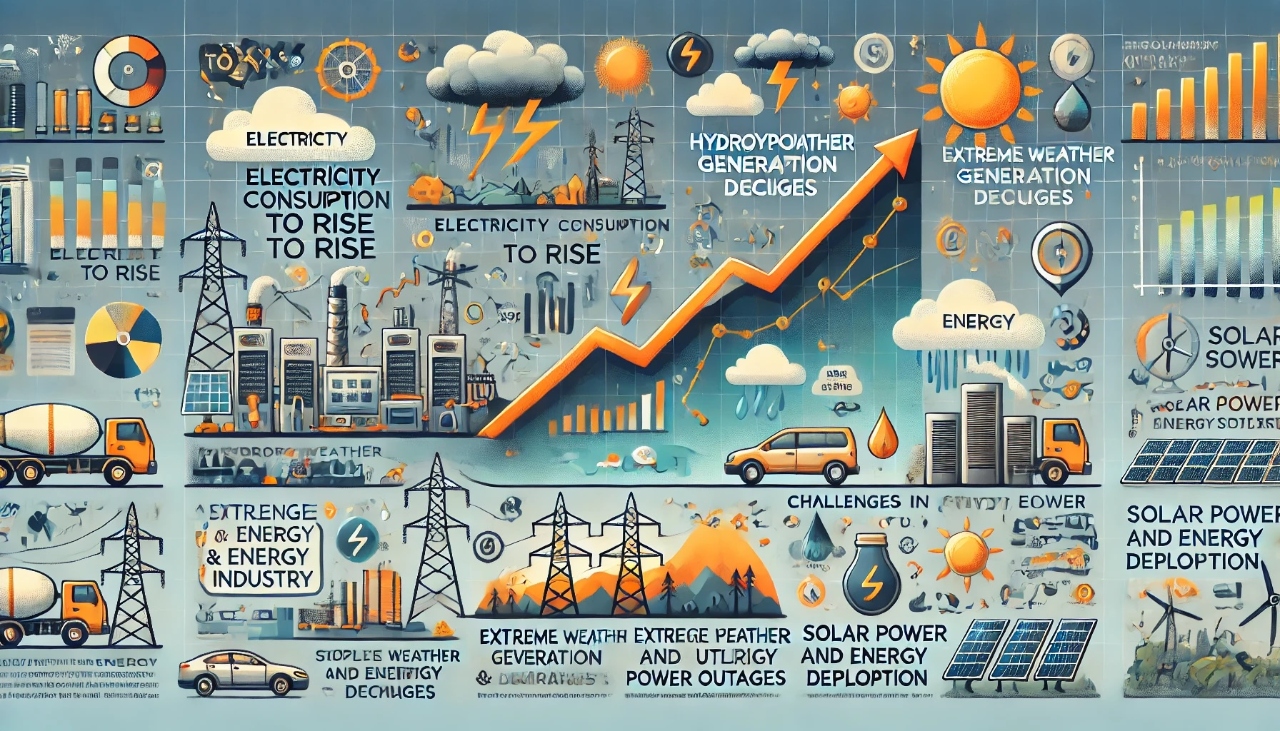
Electricity Consumption to Rise Due to Warmer Temperatures and Data Center Expansion: The U.S. Energy Information Administration (EIA) predicts a 3% increase in electricity consumption in 2024 and 2% in 2025, reversing the recent trend of stagnant demand. This surge is mainly due to higher air conditioning demand from warmer-than-average temperatures and the escalating energy consumption of data centers, fueled by the growing demand for cloud services and artificial intelligence. The EIA anticipates that residential, commercial, and industrial electricity sales will all experience growth. (Source: EIA)
Hydropower Generation Declines Globally Due to Weather Impacts: The International Energy Agency (IEA) reports a global decrease in hydropower generation in 2023 due to extreme weather events, including droughts, low rainfall, and early snowmelt. The U.S. was among the affected countries, witnessing a significant drop in hydropower output. This situation has led to increased reliance on fossil fuels like natural gas and coal, raising concerns about the stability of electricity supply, especially during peak demand periods. (Source: IEA)
Extreme Weather Events Trigger Power Outages, Emphasizing Need for Resilience: The IEA highlights the vulnerability of power grids to extreme weather, citing major power outages in the U.S. caused by heat waves and storms. These events disrupted millions of lives and economic activities, underscoring the urgent need for resilient generation, transmission, and distribution infrastructure investments. The IEA calls for greater preparedness to ensure reliable electricity access as weather patterns become more unpredictable and severe due to climate change. (Source: IEA)
Mixed Fundamentals and Rising Costs Challenge the Power and Utilities Industry: Deloitte's 2024 industry outlook paints a complex picture for the U.S. power and utilities sector. While supply chain disruptions are easing and wholesale prices are moderating, electricity sales continue to decline due to energy efficiency measures and distributed generation. Additionally, the industry faces record-high capital expenditures for grid modernization and the transition to clean energy sources. This, combined with rising interest rates and the financial burden of weather-related disaster recovery, is expected to exert upward pressure on customer bills. (Source: Deloitte)
Solar Power and Energy Storage Deployment Break Records: Despite the challenges facing the power and utilities sector, the U.S. is experiencing record-breaking solar power and energy storage deployment in the U.S. Supportive policies and incentives drive this momentum at the federal and state levels. The landmark clean energy and climate legislation passed in recent years continues to spur investment in renewable energy sources, positioning solar and energy storage as critical components of a more resilient and sustainable electricity system. (Source: Deloitte)